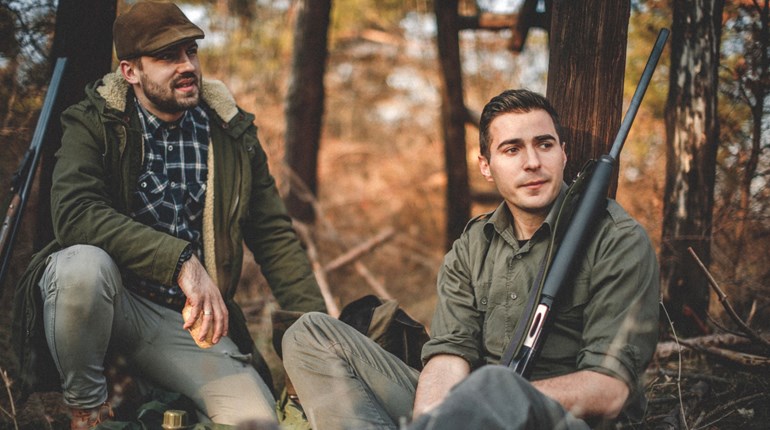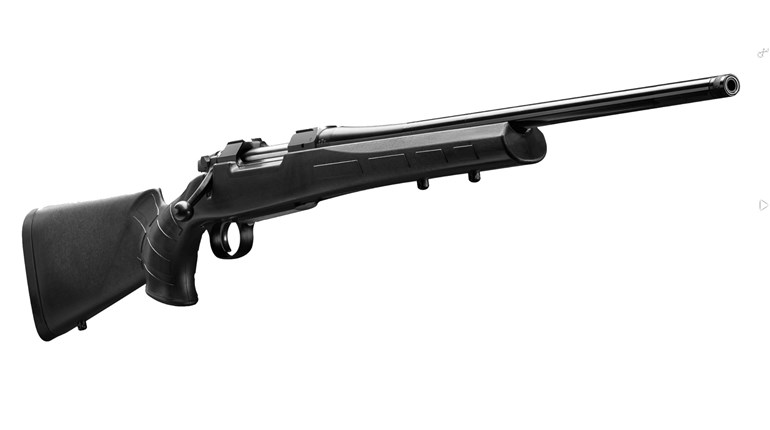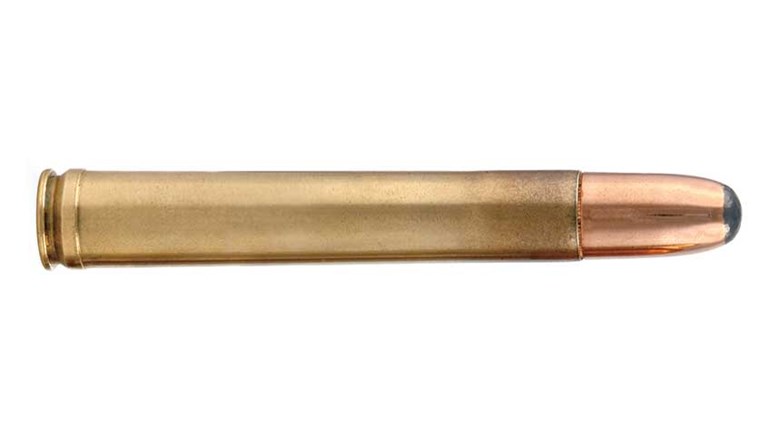
The job of packer in an Alaska hunting camp defines the word “sucks” for most people. It consists of living for months without a shower in a leaky tent during the rainy season, eating lousy food and carrying extremely heavy packs for miles and miles in some of the toughest terrain on Earth, all for poverty-level wages. The guys who do it have a few common traits: They are young, tough as granite and they love their jobs.
They carry large packs full of meat through areas with bears lurking about, so the possibility of a problem is always at the front of everything they do. They are in essence pizza delivery for bears, bringing large bags of bloody meat right to the bears’ homes.
Shortly before I arrived in one northern Alaska camp, a couple of packers were rushing to beat the failing light. Covered with blood and loaded down with packs of caribou meat that doubled the weight pressing on their boots, they were tired and thinking mostly about a hot meal and a dry sleeping bag as they pressed toward camp. As the lead guy pushed through the thick brush along the river a very large grizzly bear stood up and took a swing at his head. Young reflexes saved him, as he ducked and the bear hit the pack, knocking him down. He rolled, drew the .44 Magnum pistol in his chest holster and emptied it into the bear, ending the encounter.
The lesson here is to always keep your gun where you can access it quickly. One of the guides in that camp told me he had been carrying his revolver in his pack because it was in the way on his belt when he shouldered a pack. After this encounter he fashioned a makeshift chest rig with rope and his belt holster, but said he was ordering a “store-bought” holster as soon as he got back to civilization.
A few years prior to that, I was in another Alaska camp hunting moose. Propped against a tree in front of the cook shack was a huge moose skull and rack. In the center of the skull’s forehead was a .44-caliber bullet embedded in the bone. I knew that had to have a story attached to it.
A client had wounded the moose and was unable to keep up while the hunting party followed the blood trail. The guide went on ahead and blundered into the angry bull. It charged, and he shot it between the eyes with his .44 Magnum pistol. The moose fell to the ground, and the guide was so full of adrenaline he ran up and emptied the rest of the gun into the bull’s chest. It turns out that was a good move as the first bullet just knocked out the bull; he would have probably gotten back up with an even worse attitude.
The guides in that camp had all been using ammo loaded with a “sold only in Alaska” Barnes solid-brass .44 Magnum bullet with good results. But the federal government decided Barnes could no longer make these very specialized hunting bullets because it violated (at least in the feds’ minds) the “cop killer bullet” law. That guide had switched to hollow-point .44 Magnum ammo he found in a store in town. He discovered the folly of that choice when he shot the moose.
The lesson here? Use enough gun, but feed it the right bullets.
All handgun rounds are on the small side compared to a lot of dangerous-game rifle cartridges; the key is in the bullets. We need to take a lesson from professional hunters in Africa who deal with stopping charges from critters much bigger than any bear. The claim that a handgun is too small for stopping a bear attack becomes foolish when we look at how PHs deal with elephant charges.
While some handguns produce more than 2 ft.-lbs. of energy per 1 pound of body weight for even a big bear, the African guns don’t even come close to matching that ratio against dangerous game. It would be impossible to shoot a rifle producing 30,000 ft.-lbs. of energy at an elephant. I suspect the recoil would be so severe you would be better off getting stomped by the elephant.
The reality is even the most powerful elephant rifles produce less than half a foot-pound of bullet energy per pound of body weight, sometimes even less. For example, the .470 Nitro Express produces 5,132 ft.-lbs. of energy, and a bull elephant can weigh more than 15,000 pounds. Yet the .500 Smith & Wesson Magnum handgun produces 2,254 ft.-lbs. of energy, and it takes a big grizzly to weigh 1,000 pounds. Even the very biggest brown bears are 1,500 pounds.
But energy doesn’t kill animals, tissue damage kills them. African hunters will tell you penetration is the key, and the way to stop any charge is to take out the computer or circuitry controlling the critter. That means putting a bullet through the brain or spinal cord. That takes a heavy, solid, non-expanding bullet that will penetrate straight and break any bones that get in the way. As my friend found out with that moose, an expanding hollow-point is not the answer in any pistol.
We can no longer get monolithic, brass solids for handguns like many African hunters use in their rifles because our government doesn’t trust us. But we can get hardcast bullets that work just as well and even better in some aspects. Cast bullets usually can be driven faster than a comparable-weight jacketed bullet from the same gun. There are some non-cast, non-expanding pistol bullets like the Barnes Buster that also work well.
A well-designed, cast bullet should be hard—about 18 or 20 on the Brinell scale. This prevents expansion, so the bullet will penetrate deeply. However, the bullet can’t be so hard that it becomes brittle and breaks up on impact with bone.
Pick a design with a lot of weight forward in the nose. This keeps the length of the bullet seated in the case to a minimum so that valuable powder space is not lost. Choose a bullet with a relatively wide, flat nose. This style of bullet has been proven to penetrate straight and deep, and is deadly on game.
It is also important to use a heavy bullet. The key is to penetrate through bone and through a lot of critter, and for that you need bullet weight: at least 300 grains for a .44 Magnum and that much or more for any of the .454 Casull or heavy .45 Colt loads. I use 400-grain bullets in my .500 Wyoming Express; with some bigger cartridges like the .500 S&W Magnum you can go up as high as 500 grains.
Part of the bullet-weight decision, though, should be based on your ability to shoot the cartridge. A 500-grain bullet at 1450 fps from a handgun is not a load most NPR listeners will want to shoot. I have passed my personal limits with some of the biggest cartridges when used in lightweight, carry-style handguns. For example, in my .500 Wyoming Express I had to back off from the full-power loads. A 400-grain bullet at 1600 fps proved too much for me (and everybody else who shot it) to handle well in a relatively light, 2-pound, 12-ounce Freedom Arms revolver. So I backed it down to about 1300 fps and found the load much more manageable, but still plenty bear-worthy.
If you’re not a handloader, check out Federal Premium CastCore ammo up to .44 Magnum. Grizzly Cartridge, CorBon, Buffalo Bore and a few other companies offer cast-bullet ammo for just about everything else.
Cartridge selection? Well, I really believe any handgun you bring to any fight should have a name that starts with at least a 4. That’s really important if you are fighting a bear! I think the rule of “4-3-1” should apply: a bullet diameter that starts with at least a 4, a bullet weight that starts with at least a 3 and a muzzle velocity of at least 1000 fps.
The .44 Magnum is probably the bottom limit. I know, some guys claim the .41 Magnum or even the .357 Magnum is fine, but I do not agree. I have watched them both work on black bears and I was never impressed. The point here is not to prove you can stop a charging bear with a smaller, inadequate cartridge. The point is to survive. So, I think a .44 Magnum is the starting point. I have several, but lately I am partial to a custom revolver based on the Smith & Wesson Model 629 that Ken Kelly at Mag-Na-Port built for me. This gun is small and light, so I am inclined to carry it often. Even with the short, 2.5-inch barrel, it pushes a 300-grain CastCore at just over 1000 fps. That’s not nuclear-level power, but tests have shown the bullet will penetrate deep. If it comes down to a heavy gun I might leave in camp or this one that’s with me all the time, it’s no contest. You can’t save your life with a gun that’s back in camp.
In a strong gun like a Ruger, the .45 Colt, loaded to peak performance, will do the job. It’s easy to push a 300-grain bullet to 1200-plus fps. The .454 Casull is an outstanding choice as it provides a good balance of power with manageability. My favorite is a 5-inch Freedom Arms that Ken Kelly also tricked out. That setup pushes the same 300-grain cast bullet to 1614 fps, which is serious power in a handgun.
The .475 Linebaugh and .480 Ruger are good choices. So is the .460 S&W Magnum, but only with the right bullets. The lightweight hunting bullets often loaded in that cartridge for high velocity and flat trajectory are a bad choice here. The .500 Wyoming Express, .500 Linebaugh or .500 S&W Magnum are serious cartridges with lots of power. Smith & Wesson makes a 4-inch-barreled .500 that is a big handgun, but at 3.5 pounds is not out of place in a belt holster. Just be sure your ammo includes bullets designed for penetration, rather than expansion.
I am preparing for another brown bear hunt in Alaska. Right now I am still uncertain about which backup handgun I will take. I like the idea of the power of the .454 Casull or .500 Wyoming Express, but they are both veterans of many hunts in bear country. That Mag-Na-Port .44 Magnum is new for me, so the love affair is still fresh and I am leaning toward taking that pistol.
Any way you look at it, for a gun guy, it’s nice to have options.




































